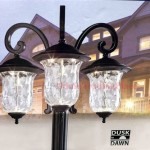How to Spray Paint Outdoor Wicker Furniture
Outdoor wicker furniture offers a blend of rustic charm and durability, making it a popular choice for patios, decks, and porches. However, exposure to the elements can cause wicker to fade, crack, or lose its appeal over time. Spray painting provides an effective and affordable way to revive old wicker furniture, protect it from further damage, and update its aesthetic to complement current outdoor décor. Proper preparation, material selection, and application techniques are essential for achieving a lasting and professional-looking finish.
This article provides a comprehensive guide on how to spray paint outdoor wicker furniture, covering everything from initial assessment to the final coat. By following these guidelines, individuals can successfully transform their worn-out wicker into a renewed, stylish addition to their outdoor living space.
Assessing the Condition of the Wicker
Before beginning the spray-painting process, a thorough assessment of the wicker furniture's condition is crucial. This assessment will determine the necessary preparation steps and identify any potential challenges. Examine the wicker for signs of damage, such as cracks, breaks, peeling paint, mildew, or insect infestation. The type and extent of damage will dictate the repair or replacement procedures needed before painting.
Structural Integrity: Check the overall stability of the furniture. Loose joints, broken supports, or severely damaged strands of wicker require immediate attention. Loose joints can be reinforced with wood glue and clamps. Severely damaged wicker may need to be replaced entirely, depending on the extent of the damage and the complexity of the weave.
Surface Contamination: Wicker furniture is prone to accumulating dirt, dust, mildew, and algae. These contaminants can interfere with the paint's adhesion and result in a poor finish. Look for signs of discoloration, staining, or visible growth. Extensive mildew or algae may require specialized cleaning solutions to remove effectively.
Existing Paint or Finish: Evaluate the condition of any existing paint or finish. Flaking, peeling, or cracking paint must be removed to create a smooth and uniform surface for the new paint to adhere to. A stable, well-adhered finish may only require light sanding to create a better bonding surface. Determine if the existing finish is oil-based or water-based, as this will affect the choice of primer and paint.
Rattan vs. Synthetic Wicker: Determine if the wicker is made from natural rattan or a synthetic material such as resin or plastic. Natural rattan requires different preparation and paint types compared to synthetic wicker. Natural rattan is more porous and susceptible to moisture damage, while synthetic wicker is more durable and resistant to the elements. Always identify the type of wicker material to choose the appropriate products for cleaning, priming, and painting.
Preparing the Wicker Surface
Proper surface preparation is arguably the most important step in achieving a durable and aesthetically pleasing paint finish. Neglecting this stage can lead to poor adhesion, premature peeling, and an uneven appearance. The preparation process typically involves cleaning, sanding, and repairing any damage to the wicker.
Cleaning: Begin by thoroughly cleaning the wicker furniture to remove dirt, dust, mildew, and any other contaminants. Use a mild detergent and water solution, applied with a soft brush or sponge. For stubborn dirt or mildew, a specialized mildew cleaner or a solution of bleach and water (1 part bleach to 10 parts water) may be necessary. Always test the cleaning solution in an inconspicuous area first to ensure it does not damage or discolor the wicker.
Rinse the furniture thoroughly with clean water to remove any remaining cleaning solution. Allow the wicker to dry completely before proceeding to the next step. Use a fan or place the furniture in a well-ventilated area to expedite the drying process. Ensure the wicker is completely dry to prevent moisture from being trapped under the paint, which can lead to blistering or peeling.
Sanding: Sanding the wicker surface helps to create a slightly rough texture, which improves the paint's adhesion. Use fine-grit sandpaper (220-grit or higher) to lightly scuff the surface. Focus on areas where the existing finish is glossy or smooth. Avoid excessive sanding, as this can damage the delicate wicker fibers. For intricately woven wicker, use a sanding sponge or flexible pad to reach tight corners and crevices.
After sanding, remove any sanding dust with a tack cloth or a vacuum cleaner with a brush attachment. Ensure the surface is completely clean and free of dust before applying primer or paint. Skipping this step can result in a gritty or uneven finish.
Repairing Damage: Address any structural damage or loose strands of wicker before painting. Use wood glue or epoxy to repair broken joints or reattach loose wicker fibers. Clamp the repaired areas until the adhesive is fully cured. For larger gaps or missing pieces of wicker, consider using filler or patching compounds specifically designed for outdoor use. These products are typically weather-resistant and can be painted over seamlessly.
If replacing sections of damaged wicker, ensure the replacement material matches the original in terms of size, shape, and color. Use appropriate techniques for weaving or attaching the new wicker to the existing structure. Allow any repairs to fully dry and cure before proceeding to the next step.
Selecting the Right Spray Paint and Application Techniques
Choosing the correct type of spray paint and employing proper application techniques are crucial for achieving a durable, attractive, and long-lasting finish on outdoor wicker furniture. Selecting the wrong paint or using improper techniques can lead to premature failure, discoloration, or an unprofessional appearance.
Choosing the Right Paint: Select a high-quality exterior-grade spray paint that is specifically designed for use on wicker or outdoor furniture. Acrylic latex paints are a good choice because they are durable, weather-resistant, and available in a wide range of colors. Avoid using interior paints, as they are not formulated to withstand the harsh conditions of outdoor exposure. Consider using a paint with UV inhibitors to help prevent fading and discoloration from sunlight.
For natural rattan wicker, consider using a paint that is specifically formulated for wood or porous surfaces. These paints often contain additives that help to seal the wood and prevent moisture absorption. For synthetic wicker, choose a paint that is designed for use on plastic or resin surfaces. These paints typically contain adhesion promoters that help the paint bond to the smooth, non-porous surface. Always read the paint manufacturer's instructions carefully before applying the paint.
Priming: Applying a primer before painting is highly recommended, especially for natural rattan wicker or if the existing finish is heavily stained or discolored. Primer helps to seal the surface, improve paint adhesion, and create a uniform base for the topcoat. Use an exterior-grade primer that is compatible with the paint you have chosen. Apply the primer in thin, even coats, following the manufacturer's instructions. Allow the primer to dry completely before proceeding to the next step. Priming is less critical for synthetic wicker but can still improve the overall finish and durability.
Application Techniques: Work in a well-ventilated area when spray painting. Place the wicker furniture on a drop cloth or cardboard to protect the surrounding surfaces from overspray. Shake the spray paint can vigorously for at least one minute before use. Hold the can approximately 8-10 inches away from the surface and apply the paint in thin, even coats. Use a smooth, sweeping motion to avoid drips and runs. Overlapping each pass slightly will help to ensure even coverage.
Apply multiple thin coats rather than one thick coat. This will help to prevent drips, runs, and sagging. Allow each coat to dry completely before applying the next coat, following the manufacturer's recommended drying time. For intricate wicker weaves, use short, controlled bursts of spray to reach tight corners and crevices. Consider using a spray paint nozzle extension to improve access to difficult-to-reach areas.
Finishing Touches: After applying the final coat of paint, allow the furniture to dry completely for at least 24 hours before using it. This will allow the paint to fully cure and harden. Inspect the finish for any imperfections, such as drips, runs, or missed spots. Touch up any imperfections with a small brush and additional paint. Consider applying a clear coat of polyurethane to protect the paint from scratches and scuffs, especially in high-traffic areas. Choose a polyurethane that is specifically designed for outdoor use and has UV inhibitors.
By carefully following these steps and techniques, individuals can successfully spray paint their outdoor wicker furniture and achieve a beautiful, durable, and long-lasting finish. This is a cost-effective way to extend the life of outdoor furnishings and refresh the look of patio and porch spaces.

How To Spray Paint Resin Wicker Chairs If You Dare

How To Spray Paint Wicker Refresh Restyle

How To Spray Paint Wicker Furniture

How To Spray Paint Wicker Furniture

How To Spray Paint Resin Wicker Chairs If You Dare

How To Spray Paint Outdoor Resin Wicker Furniture Patio Makeover

One Day Patio Furniture Makeover With Spray Paint

How To Re Coat Wicker Furniture Shades Of Blue Interiors

How To Spray Paint Outdoor Resin Wicker Furniture Porch Daydreamer

One Day Patio Furniture Makeover With Spray Paint
Related Posts







